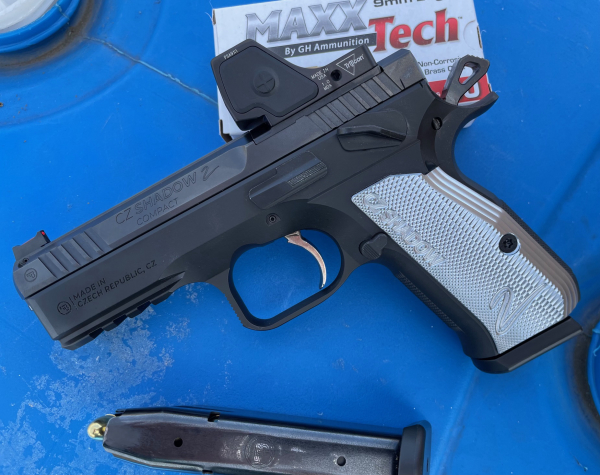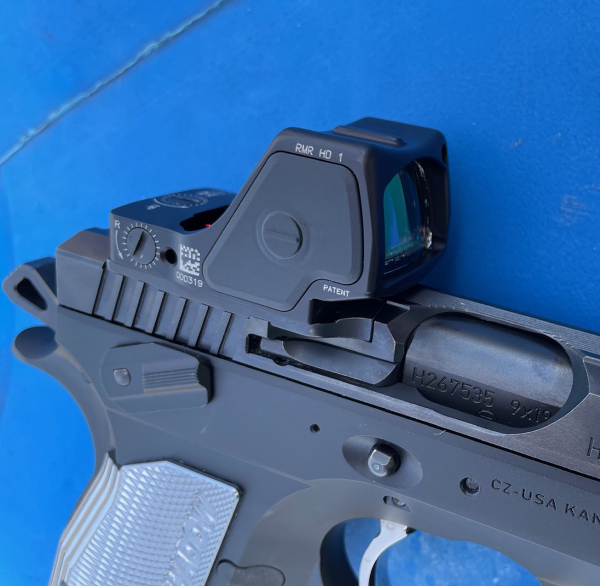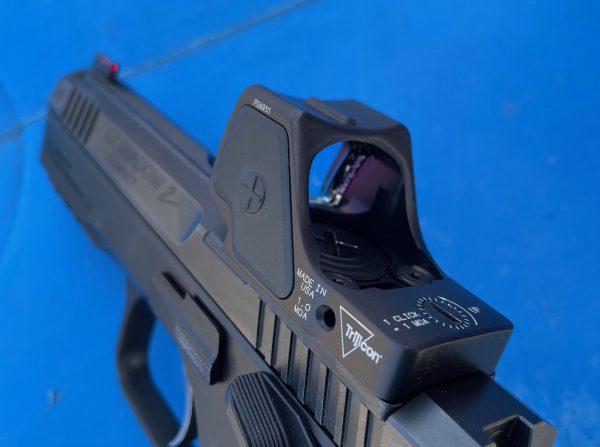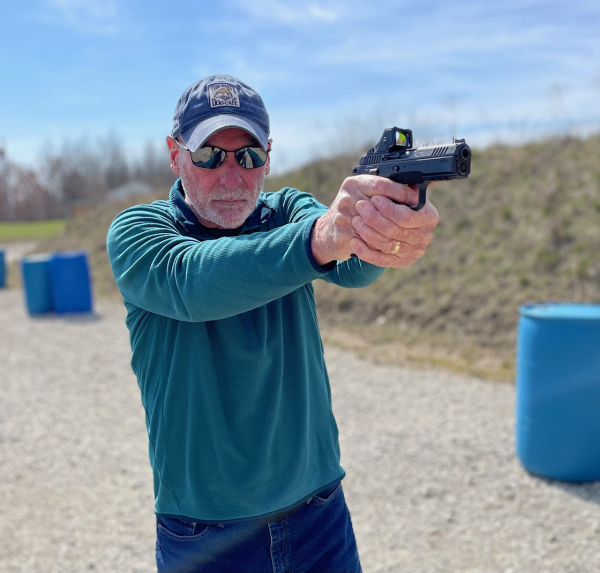
In regards to carry optics on pistols, I have “gone over to the dot side.” In retrospect, this should not be a surprise. I was an advocate of brightly colored front sights during a time when many were calling for black on black or the “three dots” configurations. After years of research into armed conflict, I came to believe the eyes were incapable of focusing clearly on a front sight within the close distances of the “typical” domestic pistol fight. While the active shooter phenomenon has brought long distance shooting to the forefront, I believe you are more likely to engage in handgun combat inside ten yards than you are outside of twenty-five.
With all the debate over which sights system or configuration is best we need to understand that any sight system does but one thing: tell us where our muzzle is pointed. If you have ever been in the unfortunate situation where another creature is trying to do you serious physical harm, then you will know it is quite difficult to pull your eyes away from them. I am not saying it’s impossible; I have spoken to many serious practitioners who have claimed they have done so. I believe them, but they were also highly trained individuals. The typical EDC practitioner may find it quite difficult. That’s why I have long advocated for a brightly colored front sight that may give a “splotch” of color to a combatant helping them ensure their muzzle is where they need it.
The pistol mounted optic may very well be the colored front sight of the 21st Century. Though I tried to not like the concept, batteries and all, I was drawn to it. After all, it glows. It is so easy to see that you don’t have to look directly at it; you can look past it as the threat you are facing which is basically what I advocated with the colored front sight. I had been doing just this for several decades, so my conversion to the carry optic was very short. I had no real problems finding the dot as I used the same technique I did with iron sights: place them where you can use/see them. It’s a deliberate act.

There are a lot of carry optics out there and many have been added within the last five years or so. This is a good thing as the more choices we have, the better decision we can make. If you are one of those who are not sure, I would suggest you look at the “names you know” such as Trijicon. Long known for their military spec optical devices, their RMR pistol sight was the first carry optic thought to be durable enough for law enforcement duty use. Their Type II optic was even better.
As good as the RMR Type II is, there were still some reasonable criticisms of the optic. The one most heard was that you had to take the optic off the pistol’s slide to change the battery, which required a re-zero of the unit. In all fairness, I have changed the battery in my RMR several times over the years and I have never had to re-zero it. The second, and heard less often, was the window was a bit too small to find the dot quickly, something I have not experienced when presenting the pistol deliberately instead of quickly. Many shooters who felt this way moved over to their SRO when it was introduced. Intended more for competition, the SRO has an optic window the size of a pie plate with a dot that it easily found. This led the good folks at Trijicon to develop a carry optic that allowed for an easy battery change along with an optic window that was a bit larger. Enter the RMR HD.

The Trijicon RMR HD was specifically designed for law enforcement and the military but is certainly a good choice for EDC. The HD features the same basic shape of the original RMR and is made from very tough forged aluminum. The same robust electronic system and quality optic lenses are still in use. The main changes in the unit are the top-loading battery, larger window and an innovative forward looking light sensor that permits the unit to read the lighting conditions and adjust accordingly. The RMR HD can still be adjusted manually by the end user. The HD also offers multiple reticle options. While I like the simplicity of a lone dot, others have different needs and I get this.
The first thing you notice when you examine the RMR HD is the window is slanted forward as compared to the original RMR. This is to allow the top loading battery compartment to be included. While some have expressed concern that this could affect ejection on some models of semi-auto pistols, I’m not convinced. I mounted my test RMR HD on the new CZ Shadow Compact. The all metal, hammer fired, SA/DA pistol offers a very smooth double action trigger, short single action and a grip configuration that feels quite good in my smaller than average hands. It was mounted on the CZ using the adapter plate purchased from CZ. Since not all adapter plates are created equal, I would suggest due diligence when purchasing.
The first thing I noted as I began to shoot the RMR/CZ combo was what Trijicon calls the “index ridge alignment aid,” a unique ridge across the top of the optic window that provides a built-in index point for fast sight picture acquisition, an alternative sighting option. Since the slide cover and mounting plate on the CZ eliminated the rear sight, I found this addition comforting. I worked with this a bit and found I could get relatively fast hits on target out to ten to twelve yards by using it as an iron sight. You have to make sure you see only the rear “bump” and not the ridge itself, or you will shoot high. I’m going to paint this ridge in the near future and further explore its use. This might be something other optic manufacturers want to think about.

The one MOA red dot of our test unit was quite easy to see and appeared bright even though it was a sunny day. When I first saw it was only one MOA, I was concerned it would not be big enough for quick use, but this concern was quickly put to rest. As stated earlier, the secret to finding the dot reliably is a deliberate path of travel to the target regardless of whether it is from ready, the holster or after some type of manipulation.
I opted not to torture test the RMR HD by dropping it on its top or other similar acts. There are others who do that quite well, so I will leave it to them. My main concern with carry optics is not the loss of the dot, its unexpected shift of the dot while in use. This has happened to me and while it is easy to say “just shift to the irons” I believe most shooters will continue to trust/use it, believing any misses are due to lack of control on the pistol. Thus, our test consisted of shooting several hundred rounds to see if the optic worked reliably. No problems there.
The RMR HD appears to be just as robust as its original and I have no doubt it will be a huge success, especially with government agencies and those that don’t mind spending extra for products that are built “over-tough”. Yes, it is a bit more expensive, but it will likely last a lifetime.
— Dave Spaulding
